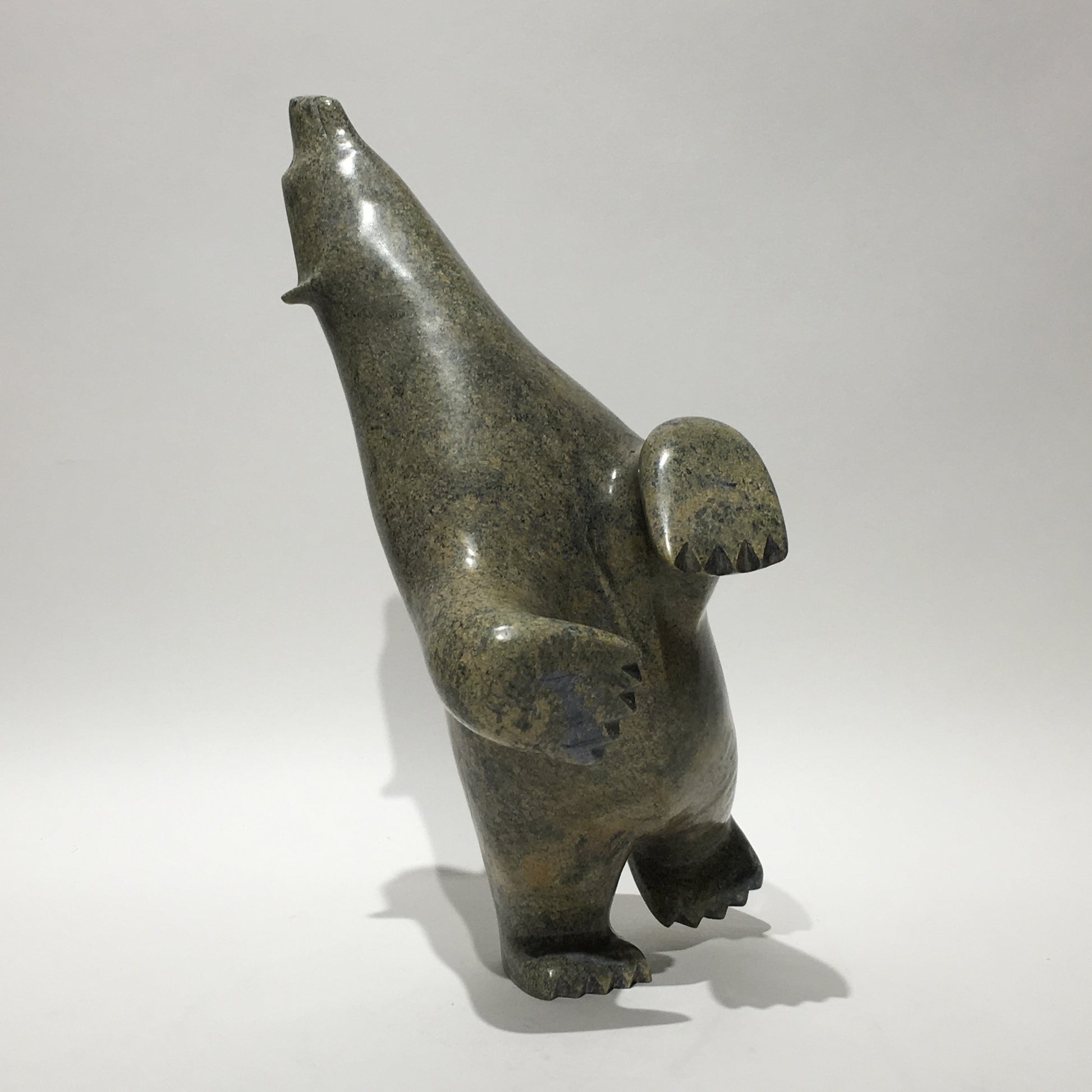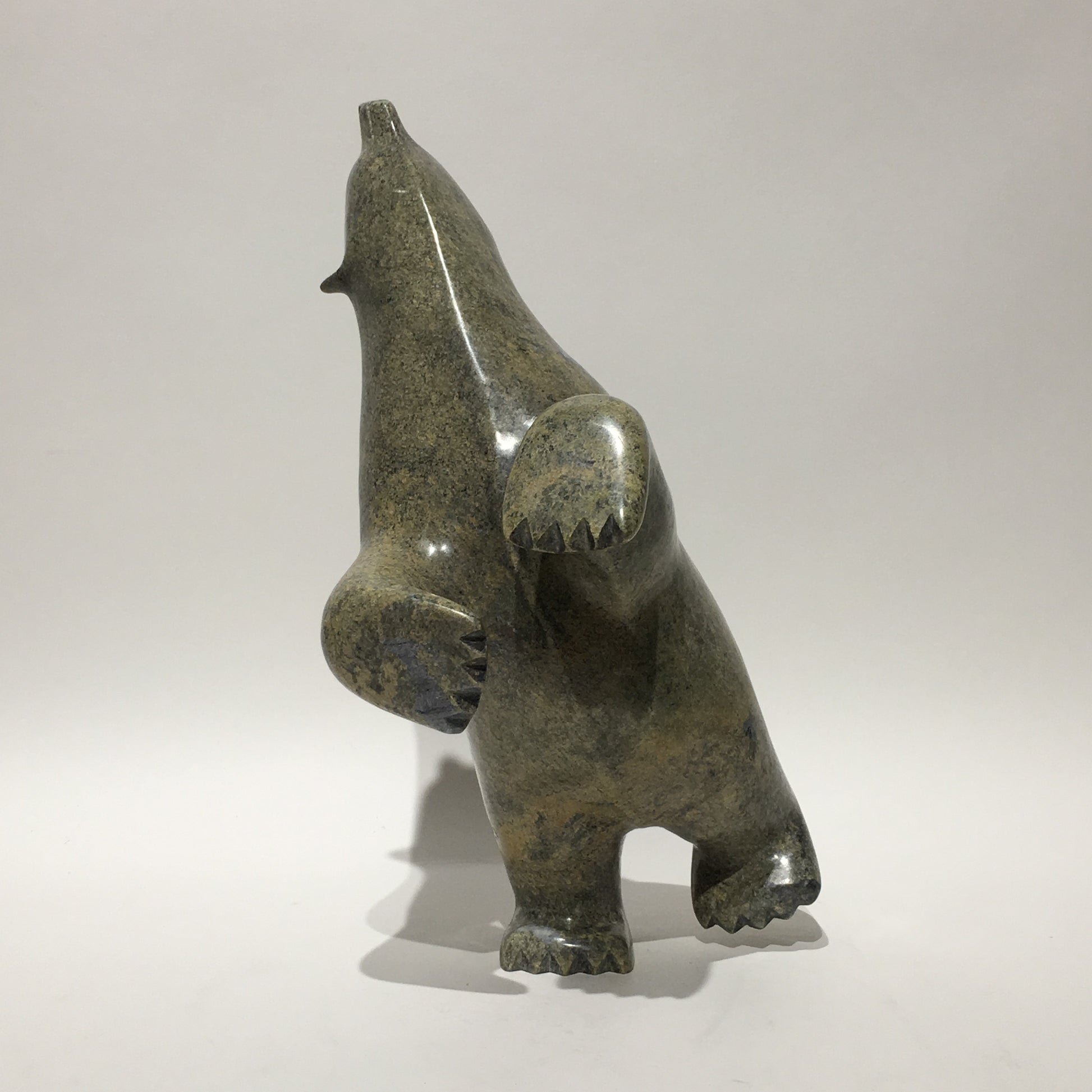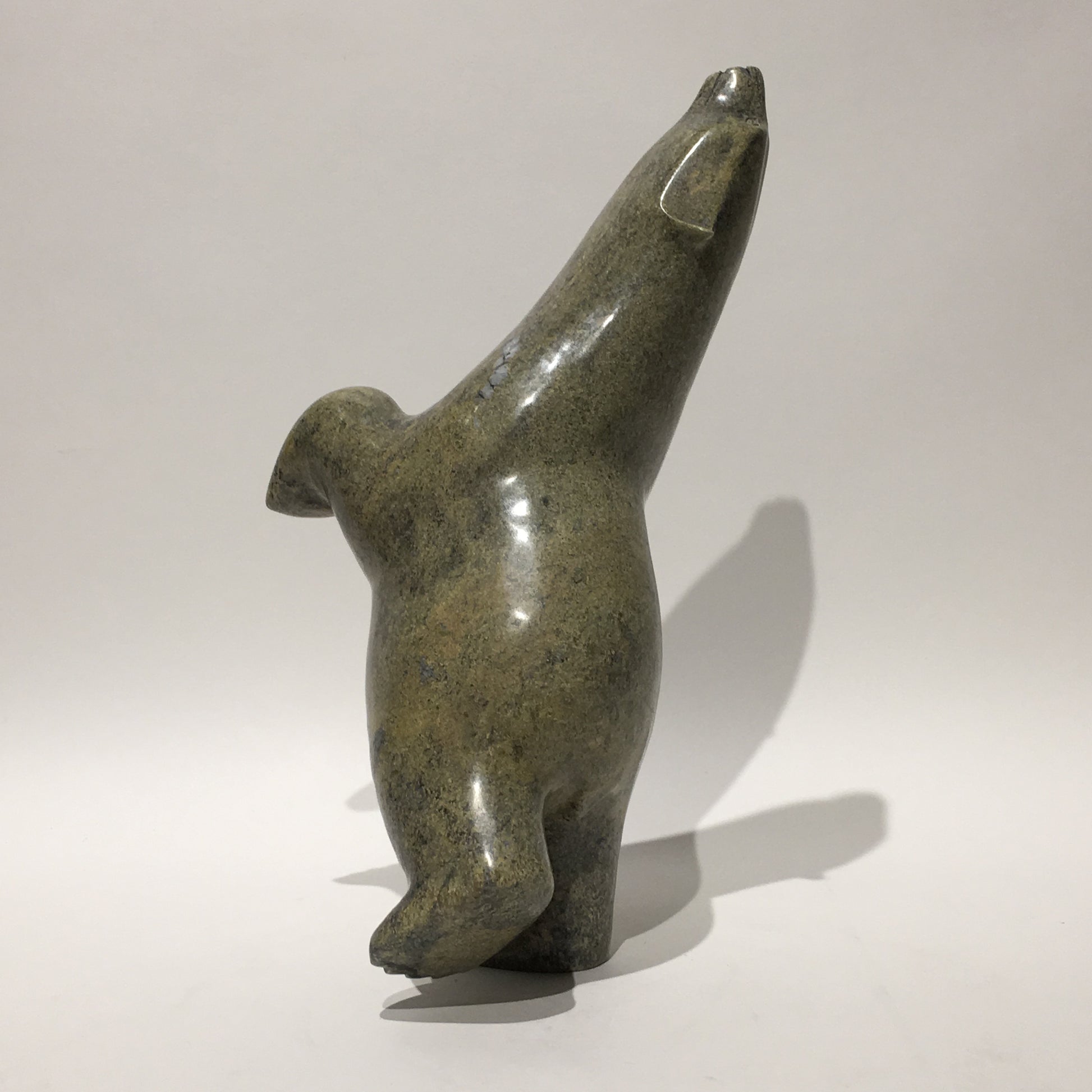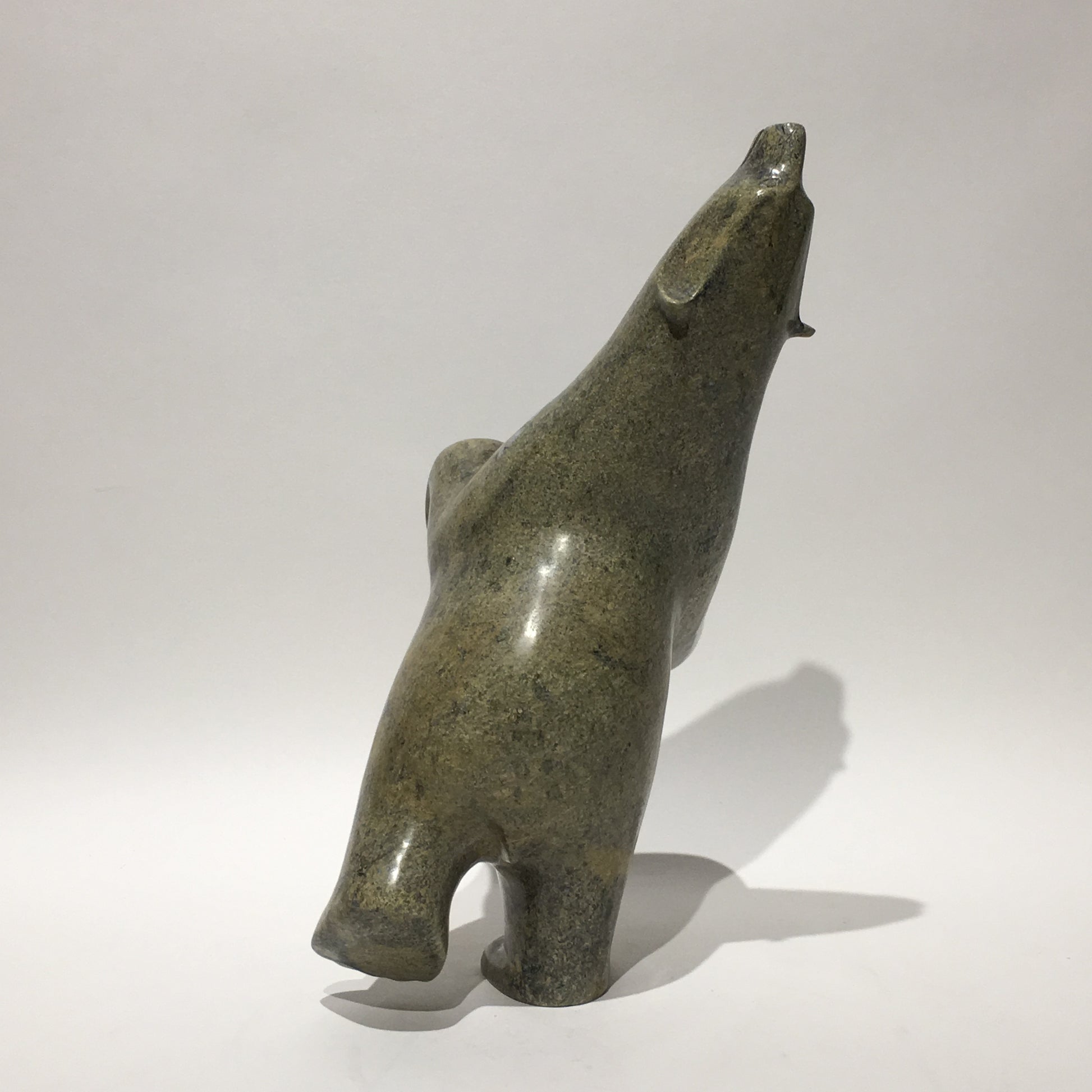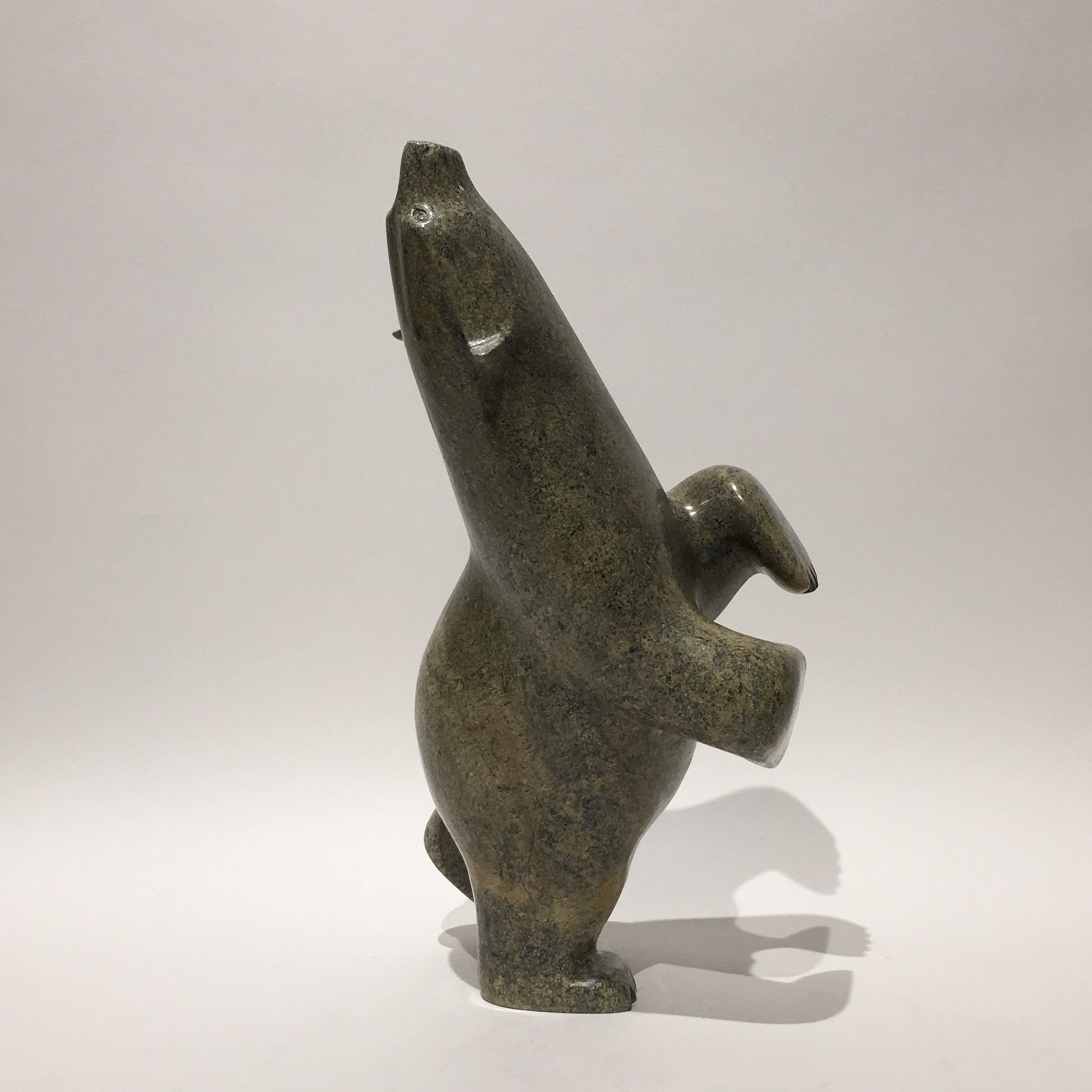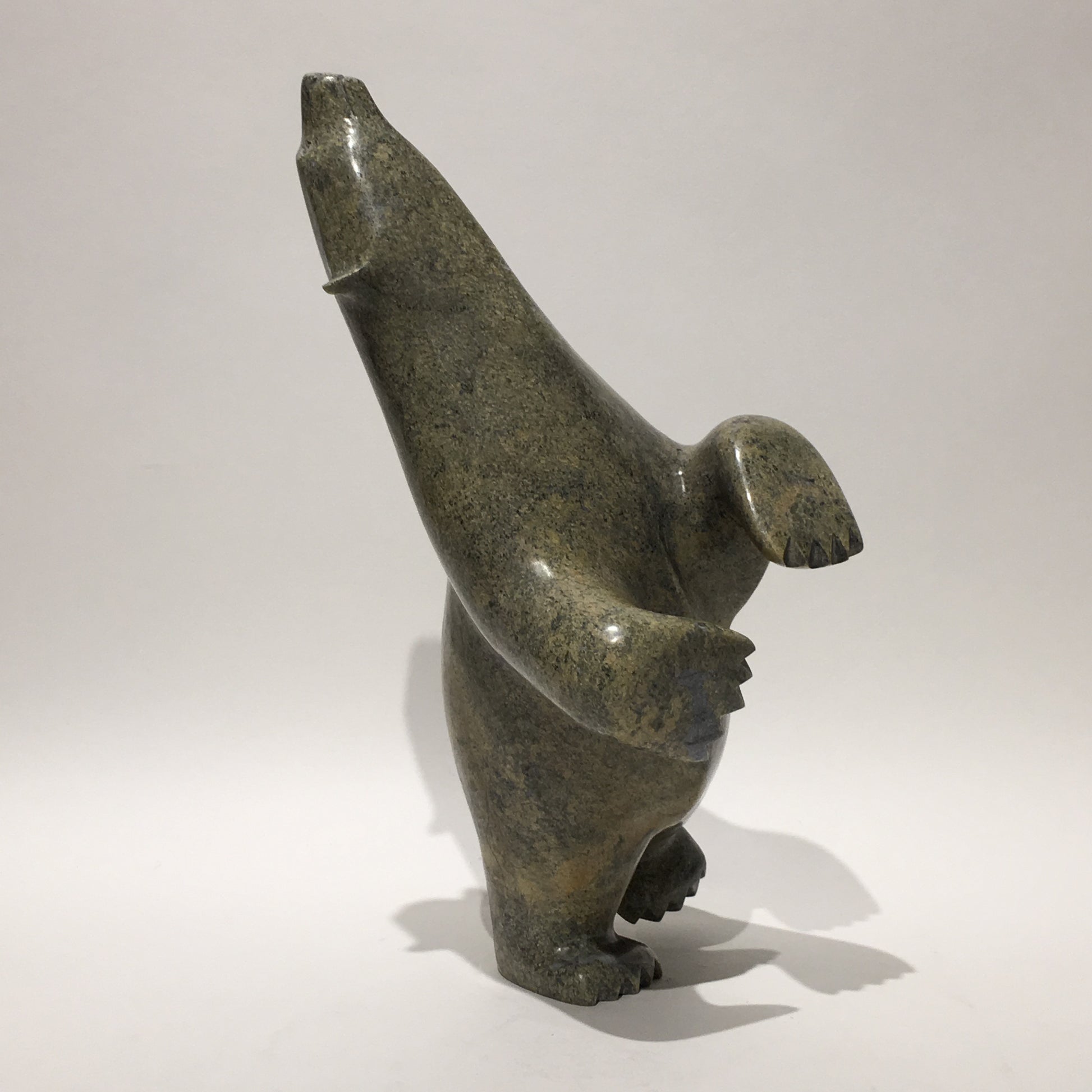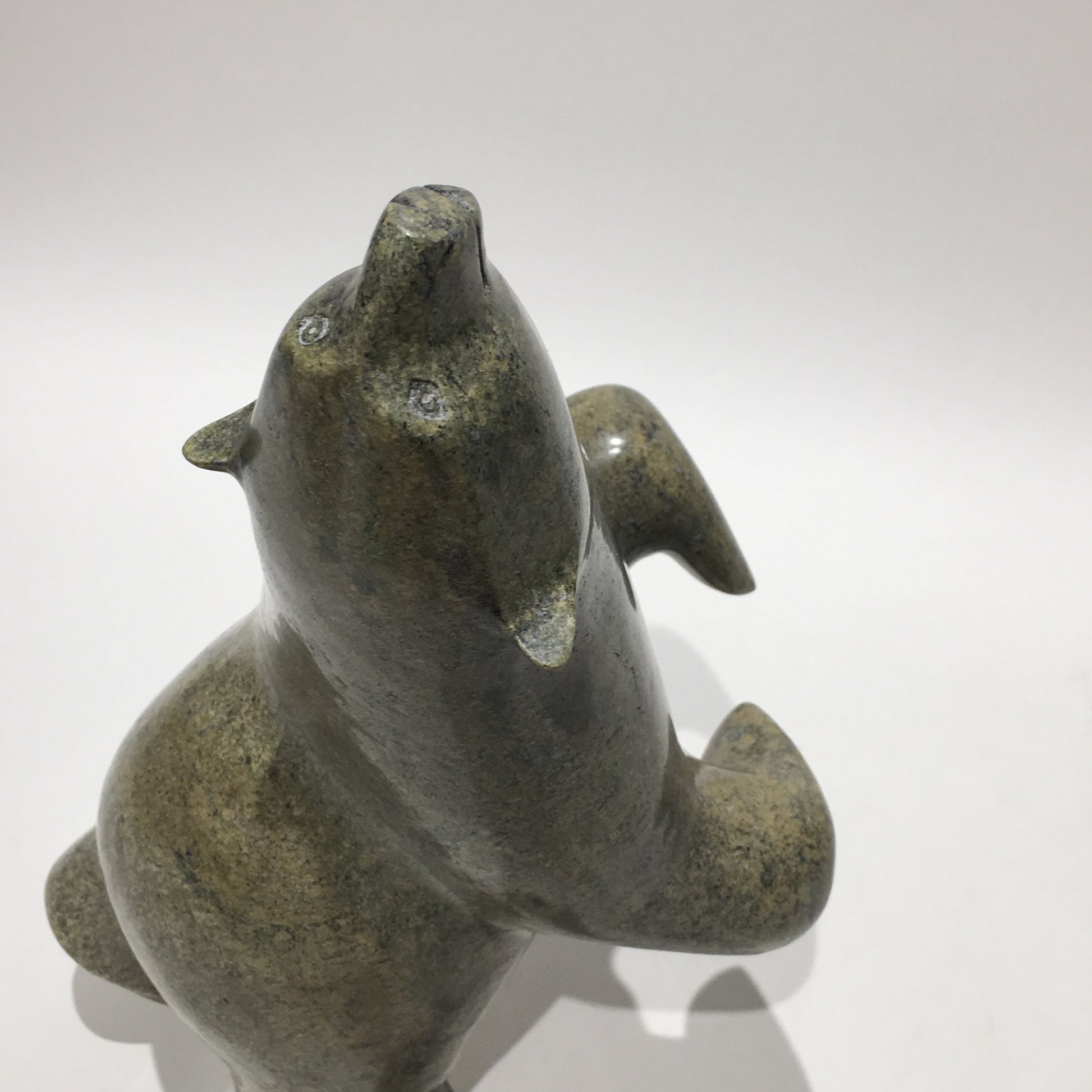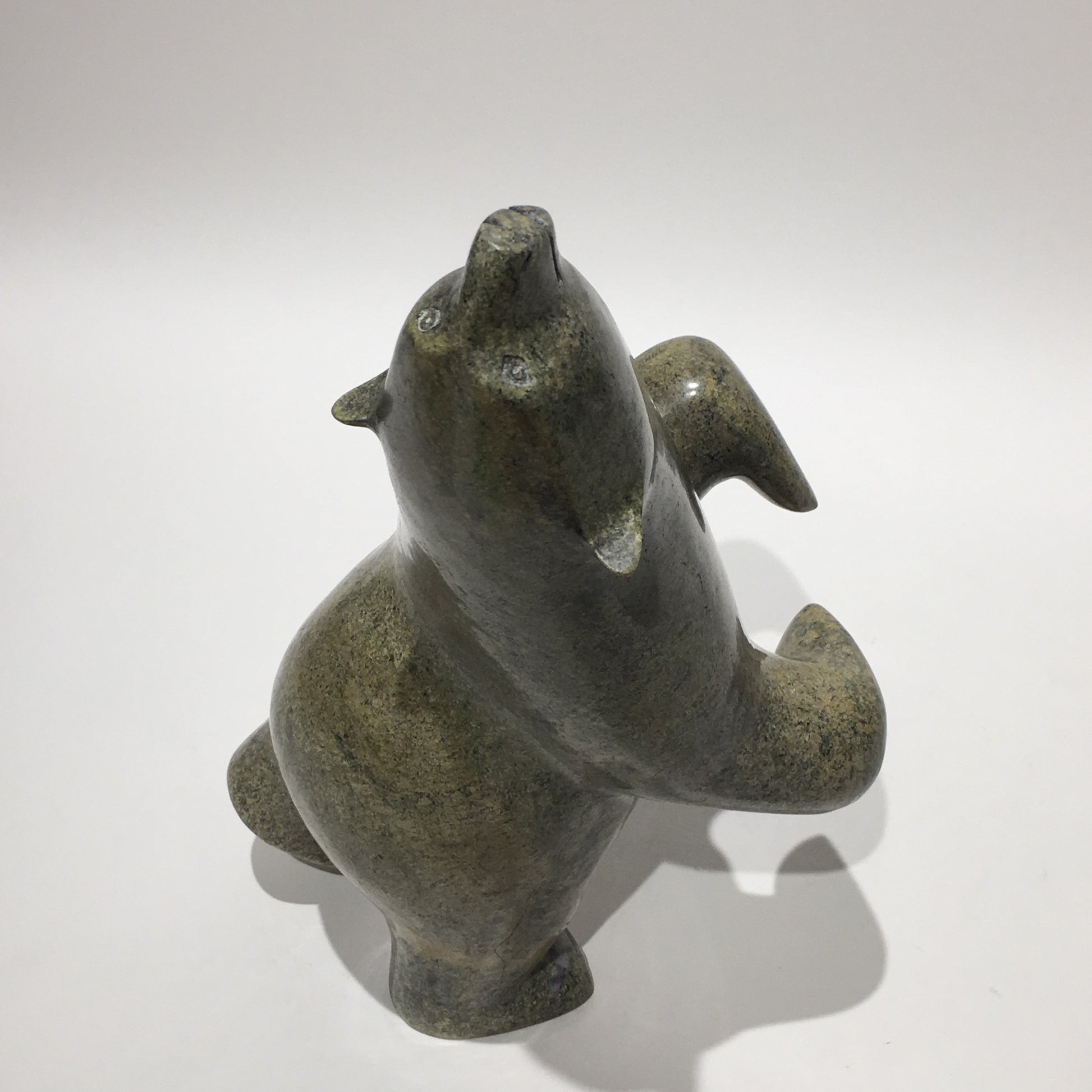Native Art Gallery
Dancing Bear
Dancing Bear
Artist: Ashevak Adla
Community: Cape Dorset
Medium: Soapstone
Dimensions (in): W6.0 x H 5.0 x D11.0
Reference: 106285
Couldn't load pickup availability
Share
Endearingly called the "King of the North", the Polar Bear, or Nanuq, is the greatest predator of the Arctic and a powerfully respected animal. He is the one animal that is at home both on land and water. He is built for his environment and has no troubles surviving the long, harsh winters.
Some Inuit believe that how we live our lives affects what we become in the afterlife. Apparently, the best reward for a life-well-lived is to return in the form of the polar bear. This is because the ‘King of the Arctic’, as he is endearingly called, is strong enough to survive the long, cold winters. Instead of carving polar bears only in walking positions or other poses often seen in nature, Inuit carvers began to make bears in upright positions, often standing on one hind leg. This pose represents the polar bear in a happy state of dancing and celebration. Some carvers claim that dancing bears represent a form of shamanism and transformation between a human and a bear.
The Dancing Bear shows gratitude for having been recognized and rewarded for his efforts. May this sculpture celebrate the successes of your life.
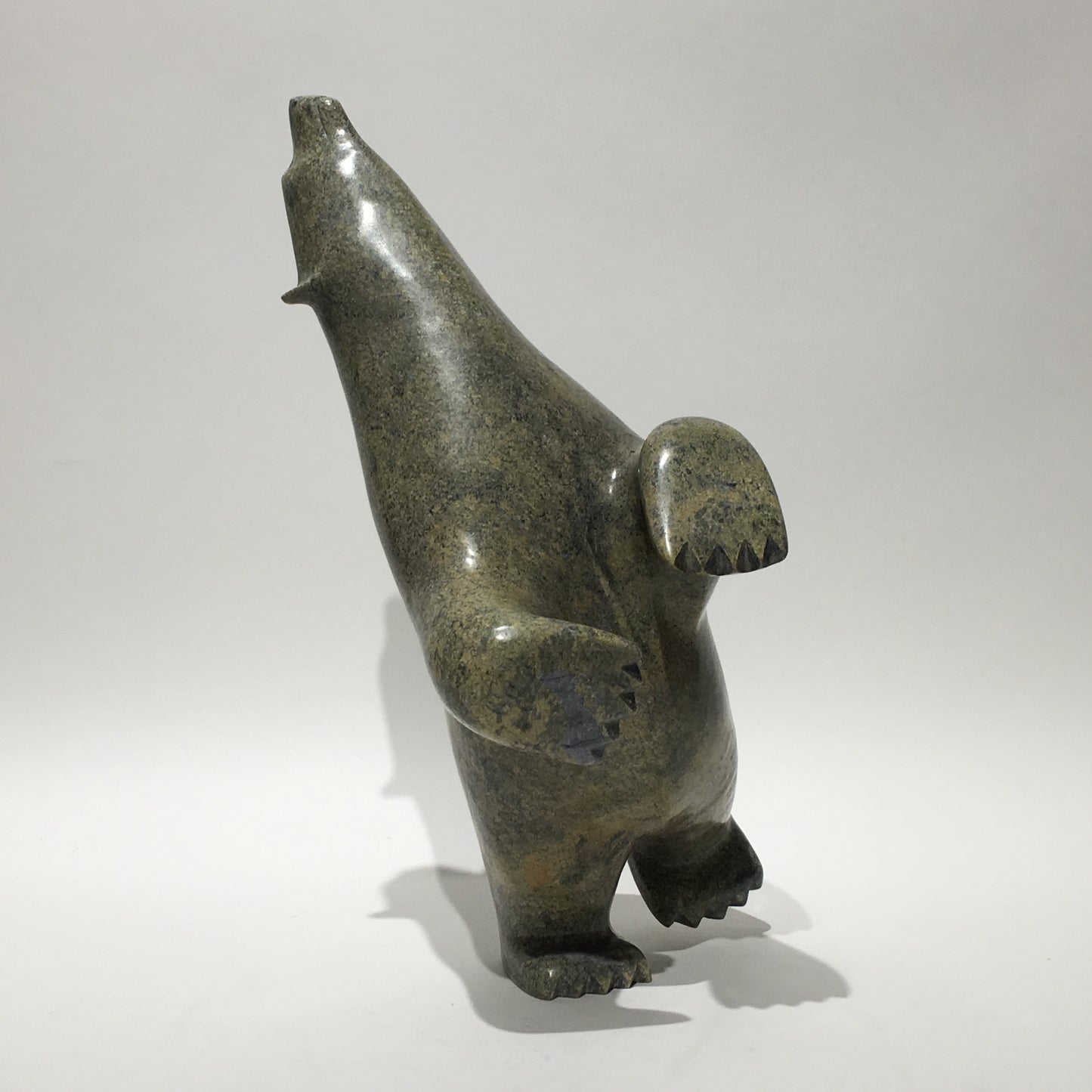
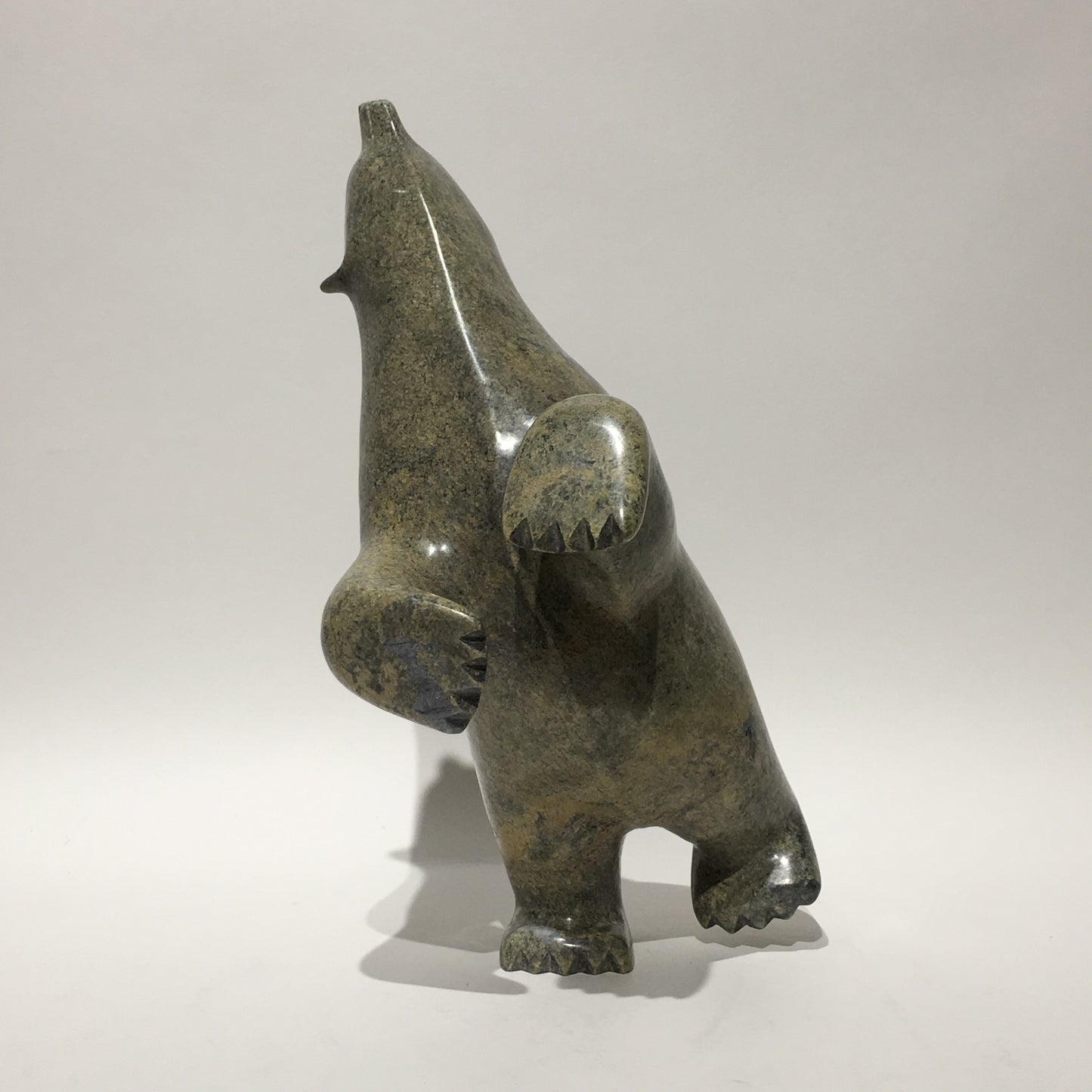
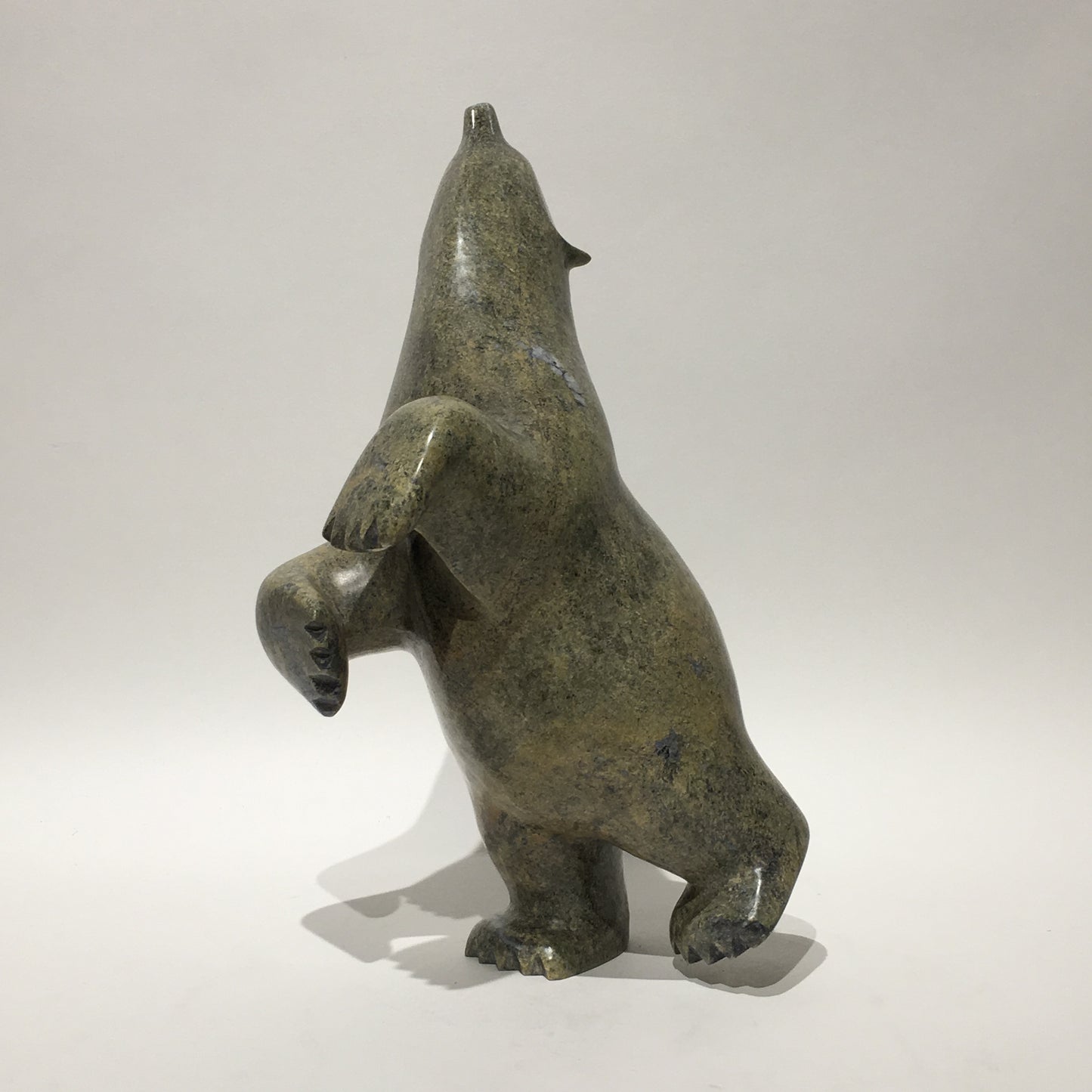
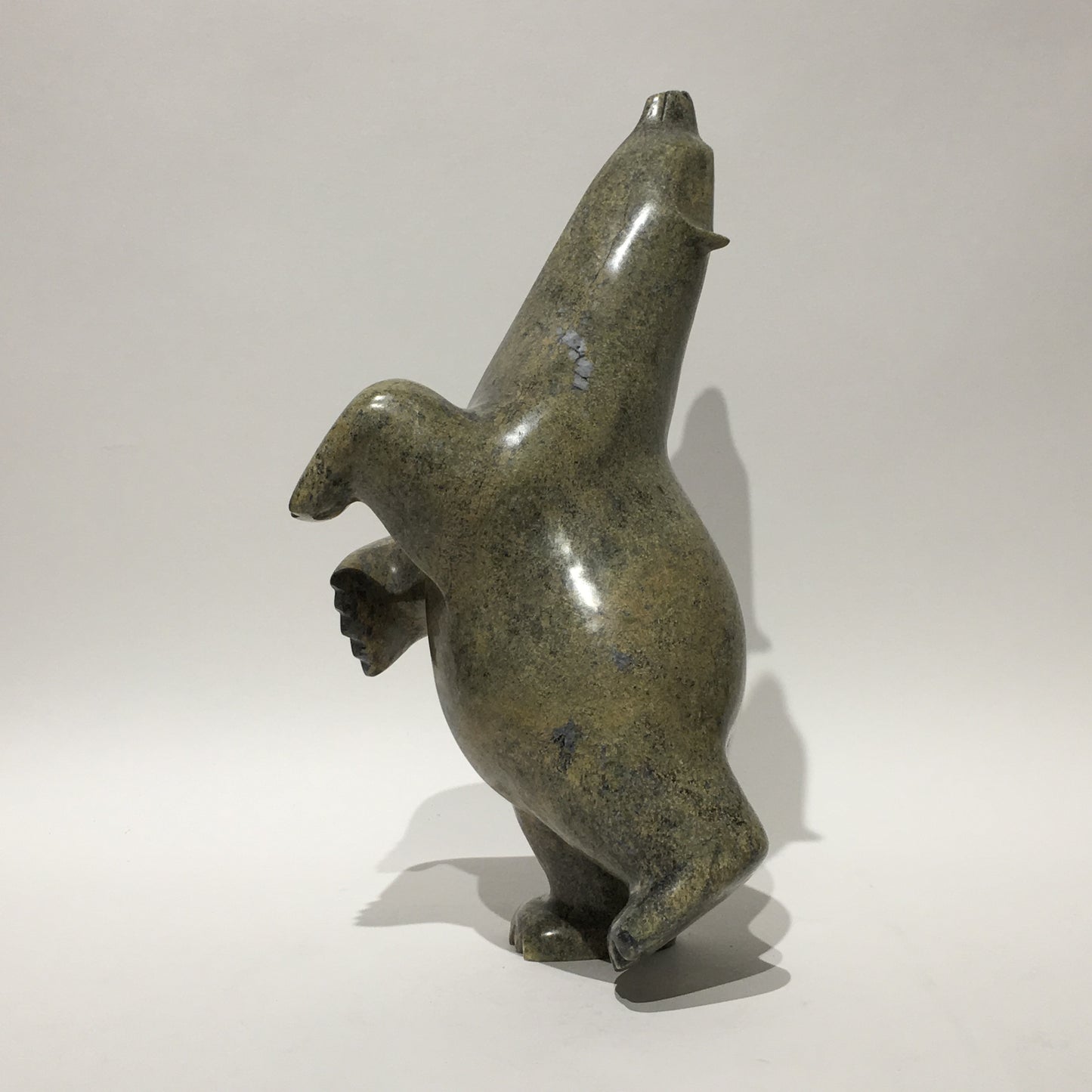
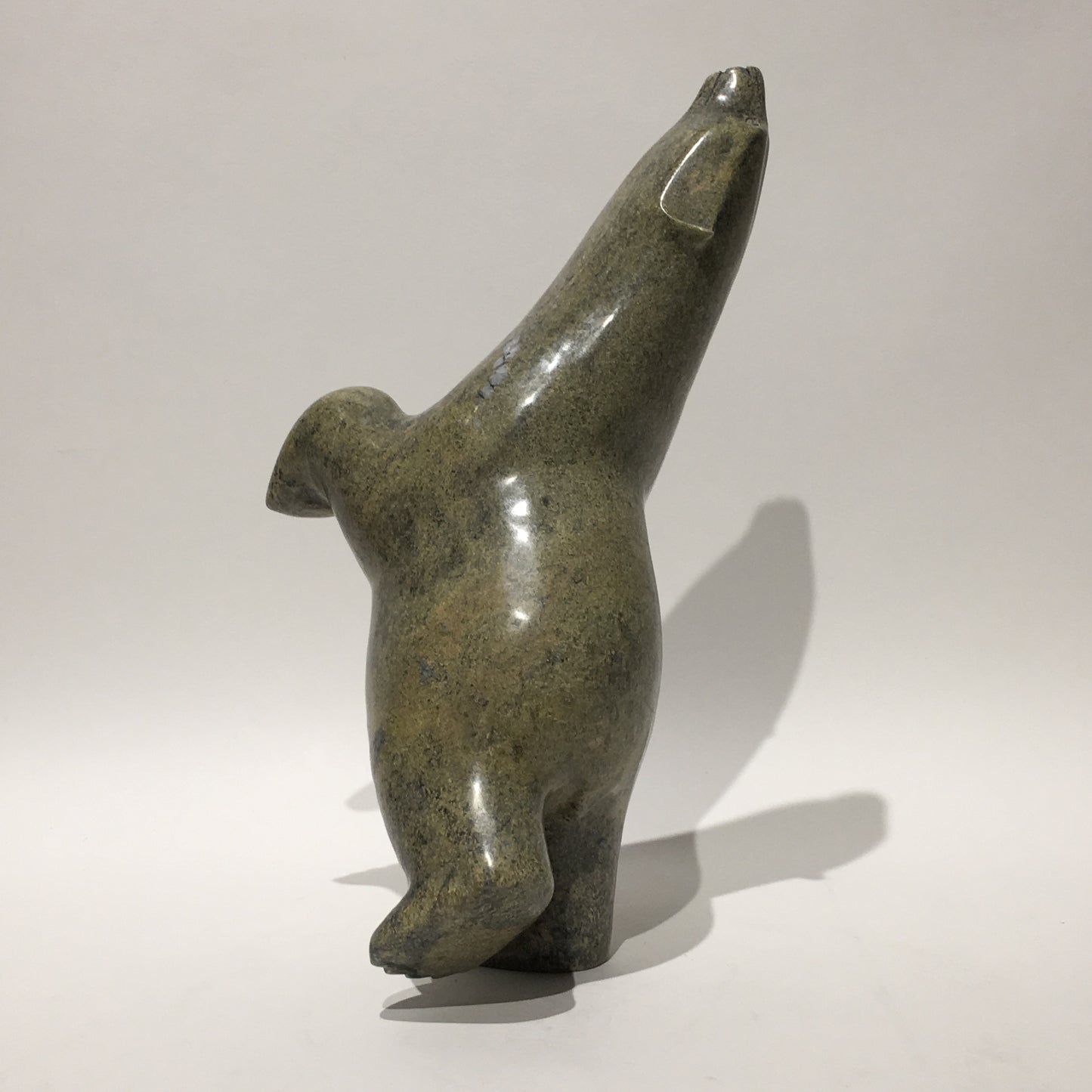
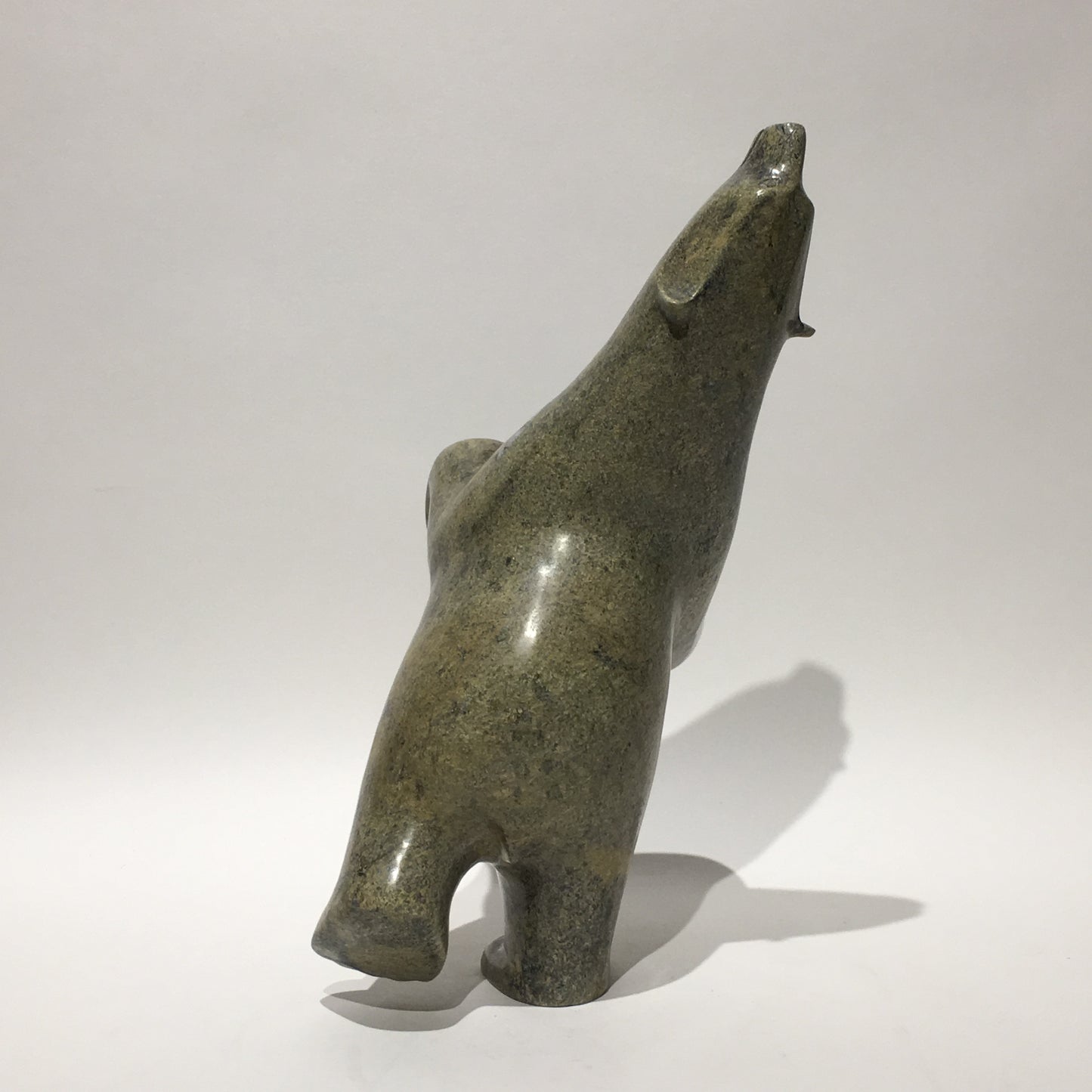
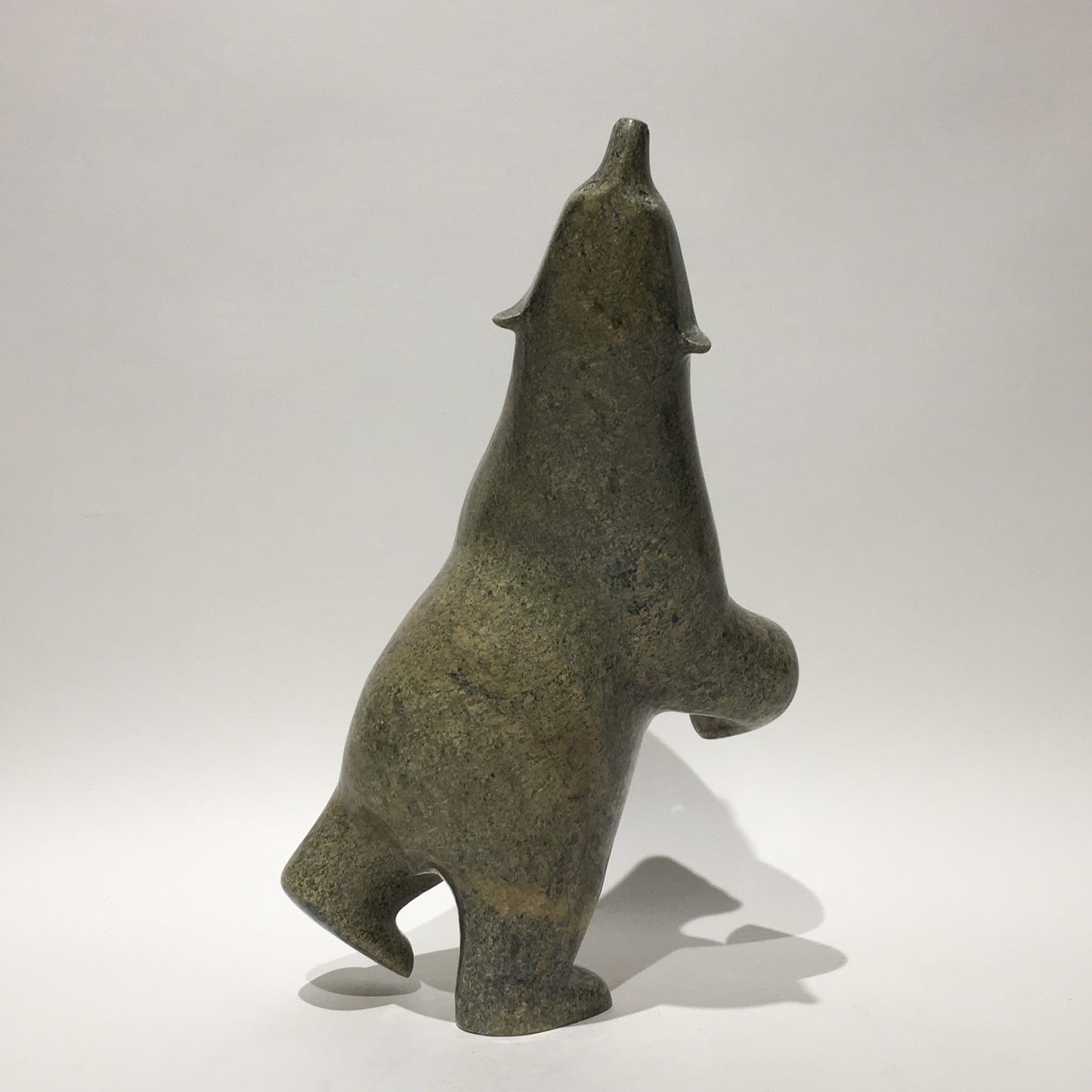
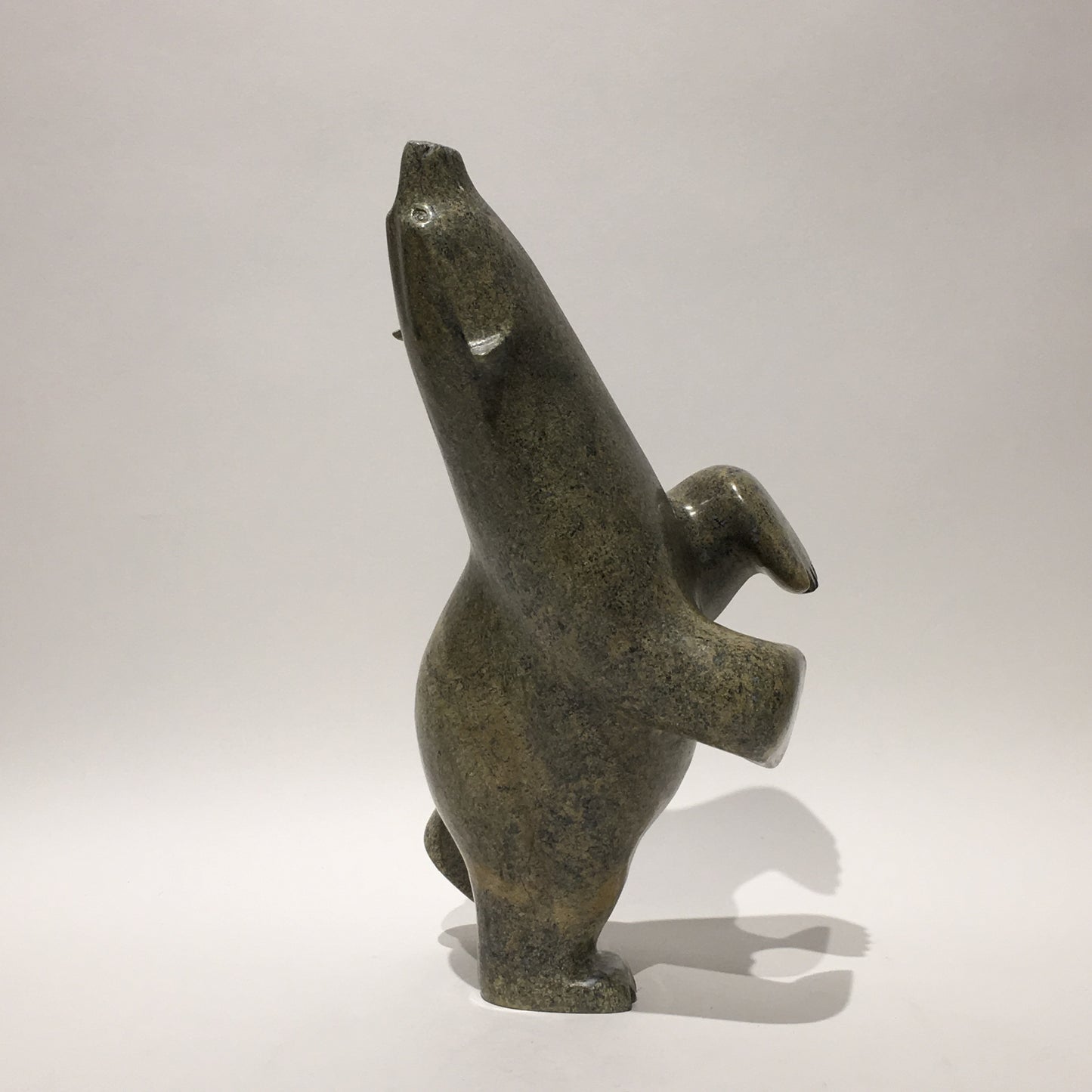
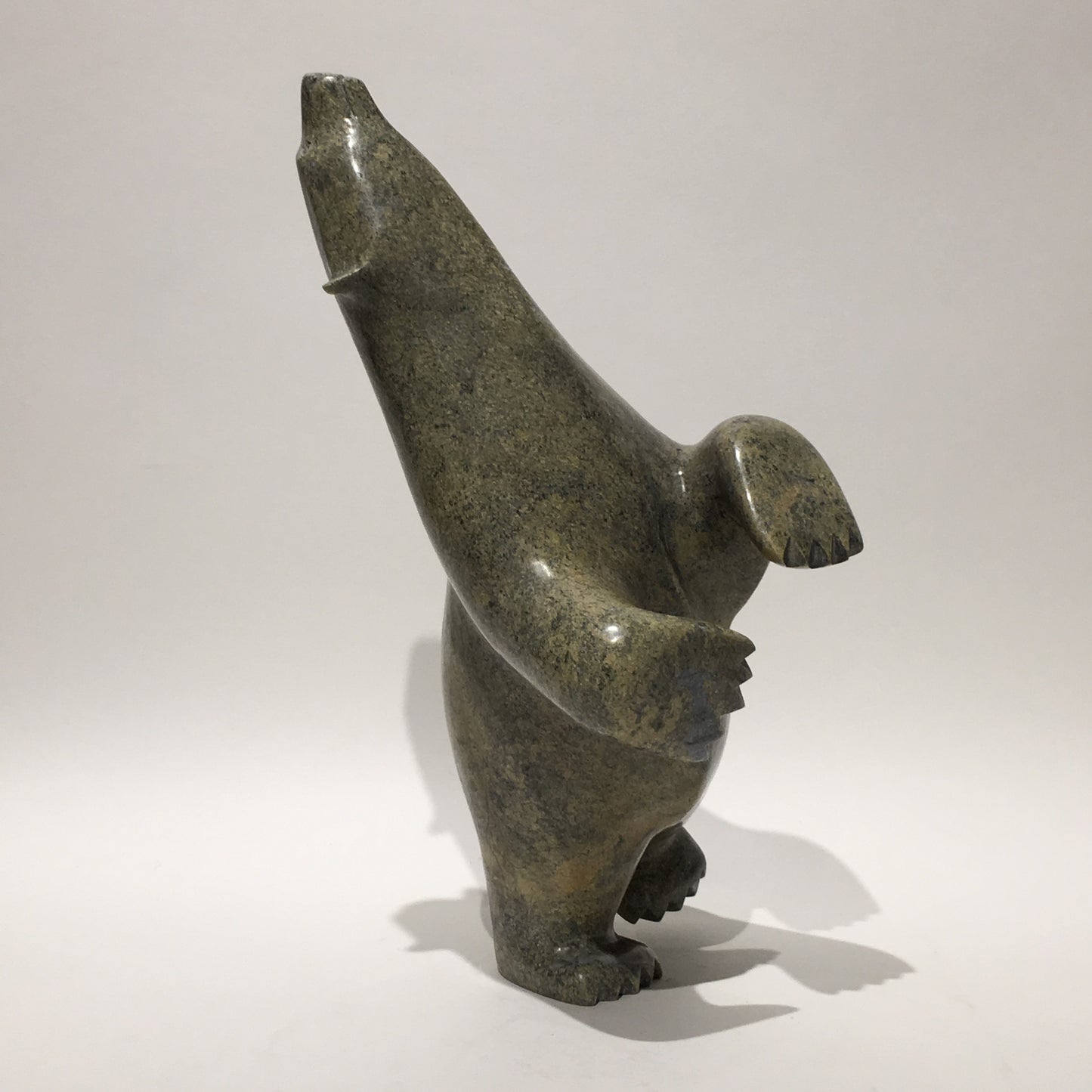
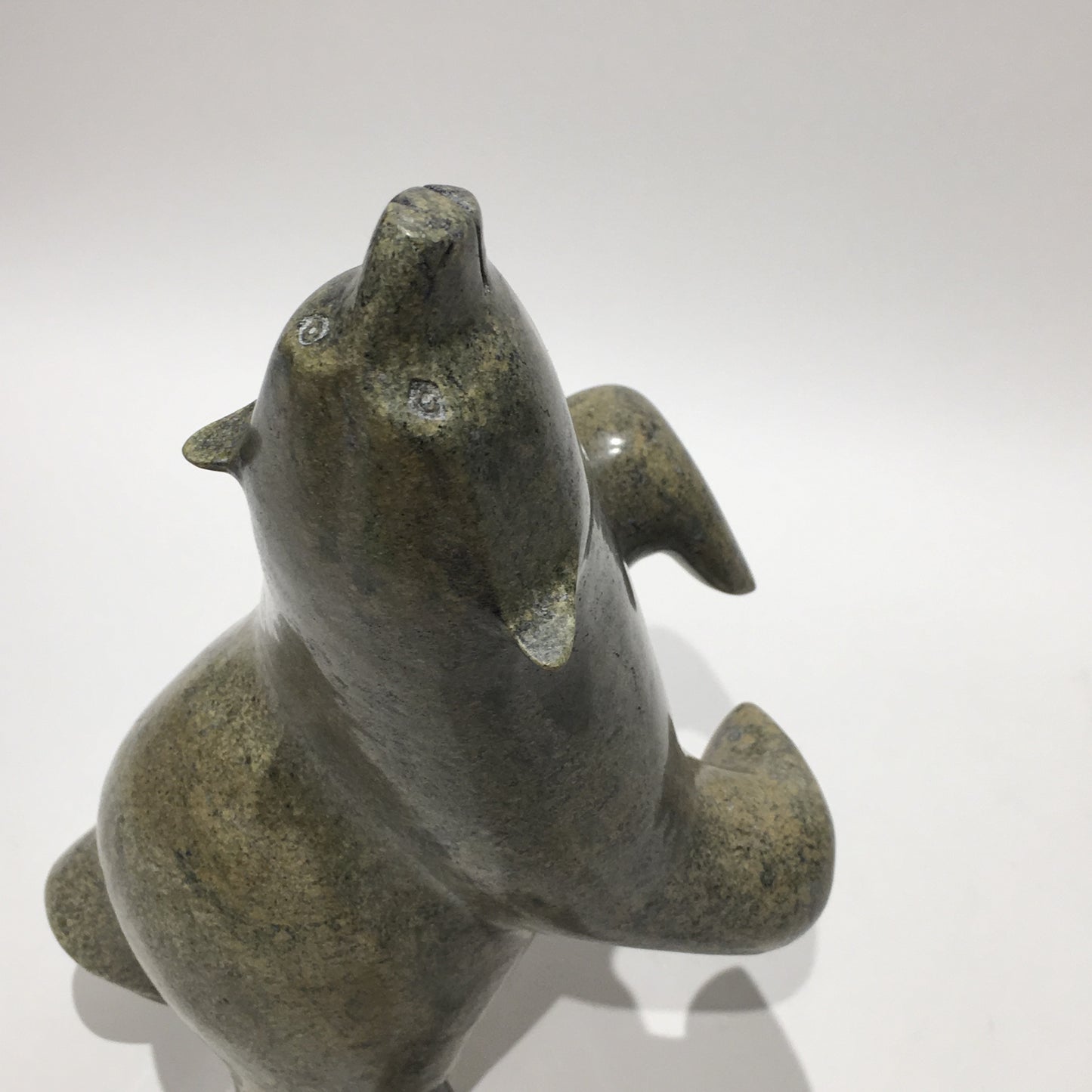
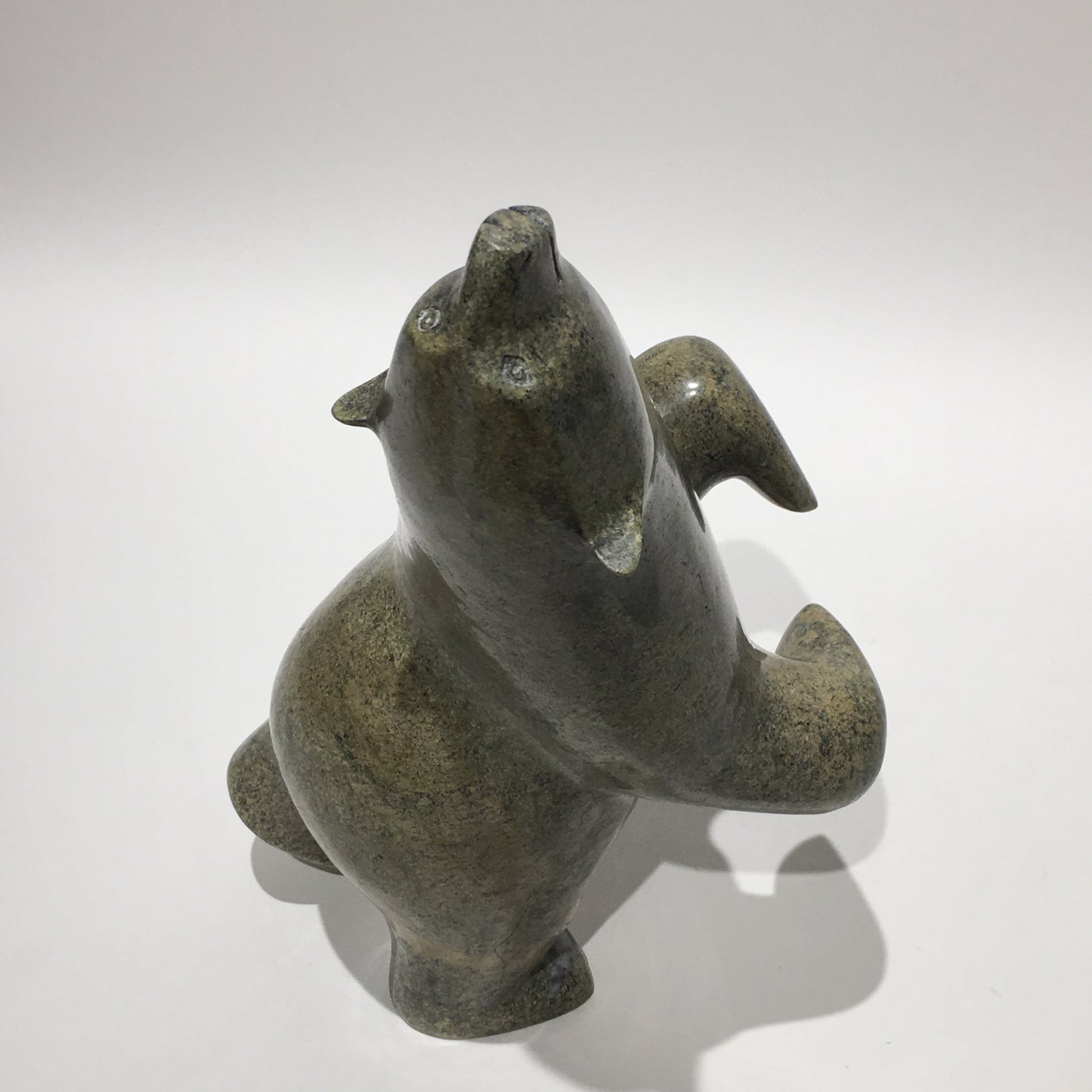
Product SKU
Ashevak Adla
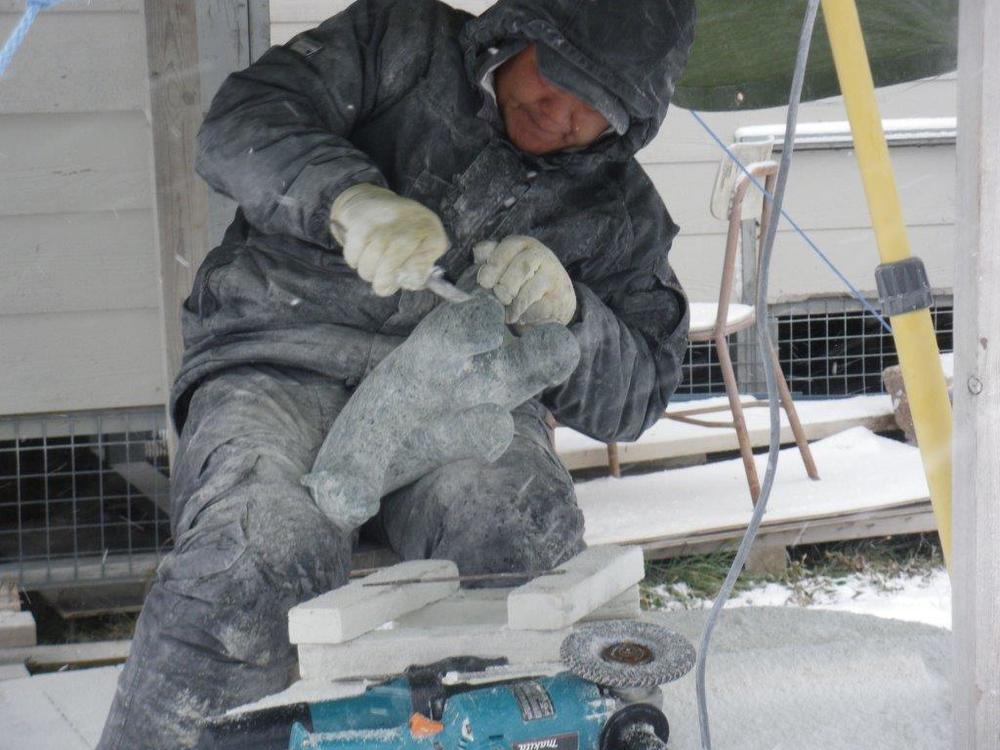
Ashevak Adla, born on February 22, 1977, in Iqaluit, Nunavut, is a prominent Inuit carver known for his detailed and polished serpentine stone sculptures. Raised in Cape Dorset, he comes from a lineage of esteemed artists; his maternal grandfather, Aoudla Pee, and paternal grandfather, Kalai Adla, were both influential carvers. Inspired by watching his grandfather carve birds, Adla began his own carving journey at the age of eleven, starting with simple bird and seal heads.
Adla’s work predominantly features Arctic wildlife such as bears, seals, and birds, often depicted in dynamic poses like walking, dancing, or hunting. His carvings are celebrated for their intricate details and high polish, which highlight the natural beauty of the stone. He initially used traditional tools like axes and hacksaws but now prefers power tools for greater precision.
Adla’s art has been showcased in numerous exhibitions both nationally and internationally. Some of his notable exhibitions include "Die Kunst aus der Arktis" in Gutersloh, Germany (1988), "Stone & Bone" in Idaho, USA (1987), "Nature and Transformation: Inuit Art" in Boston, USA (1999), and "Ursa Major: The Great Bear" in Vancouver, Canada (2014). His pieces have also been featured in several important collections and galleries, such as the Inuit Gallery of Vancouver and the Canadian Arctic Gallery in Basel, Switzerland.
Throughout his career, Adla has been influenced by master carvers like Nuna Parr and Kiugak Ashoona, whose detailed and realistic figures inspired his own work. Despite the success and recognition, Adla remains grounded, continuing to live and work in Cape Dorset. He finds inspiration and motivation in his children and enjoys spending time hunting and camping with his family, activities that connect him deeply with his Inuit heritage and the natural world.

